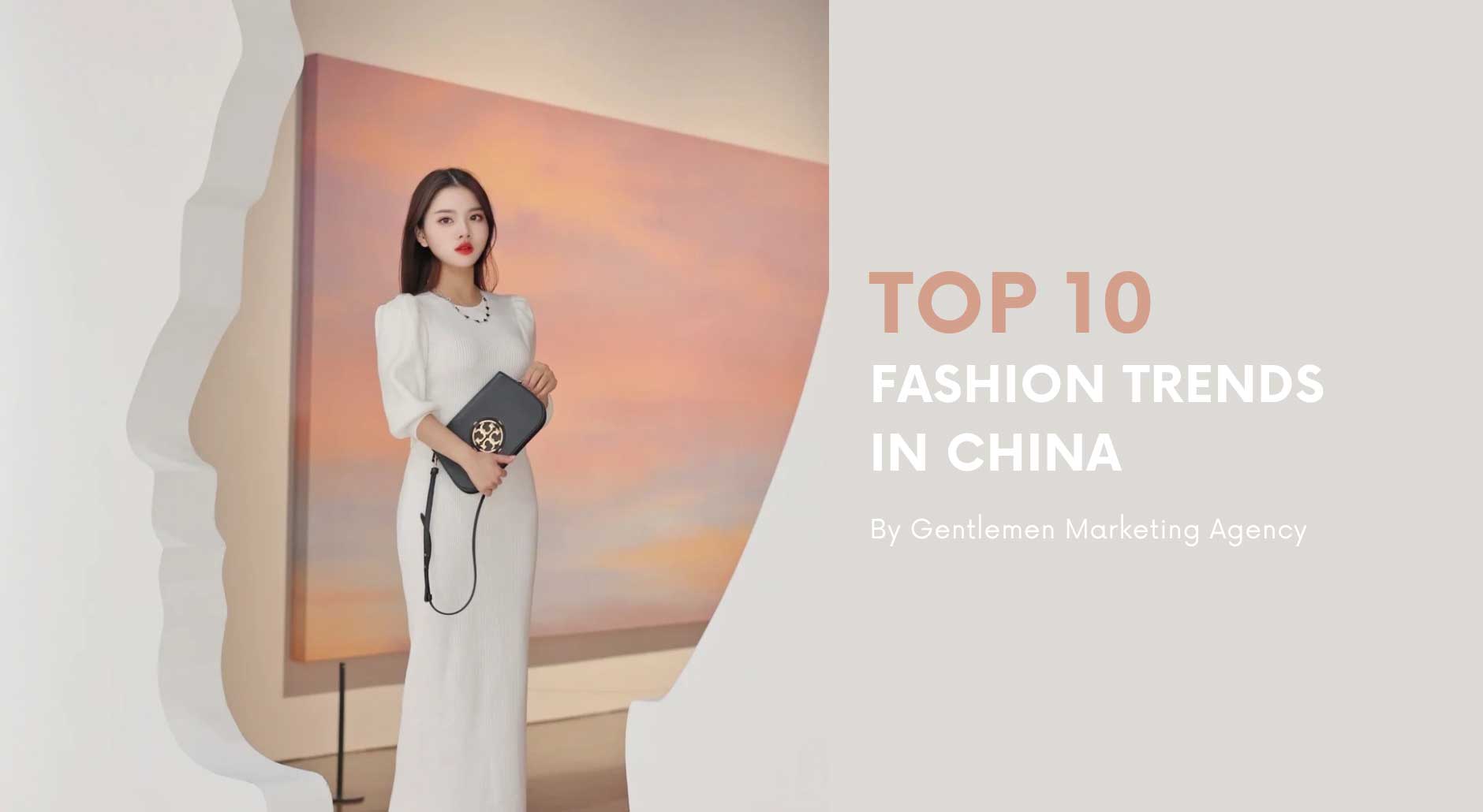The Chinese fashion market is moving fast, with trends emerging daily. In a country of 1.4 billion people, which can be said to be a multi-ethnic country, people always want to be different and express their own personalities. When 65% of consumers believe that beautiful and creative designs can inspire them to buy, I think the monotonous white shirt and jeans combination is no longer accepted by most of the market. If you want to be different, you need to look at the current hot trends occurring in China.
What are the top 10 fashion trends in China in 2022?
- Camping
- Guochao
- Adaptive clothing
- Sustainable
- Virtual world
- Pet clothing
- Athleisure
- Skateboard
- Anti-UV
- Shapewear
For the luxury trends, you can download our white book
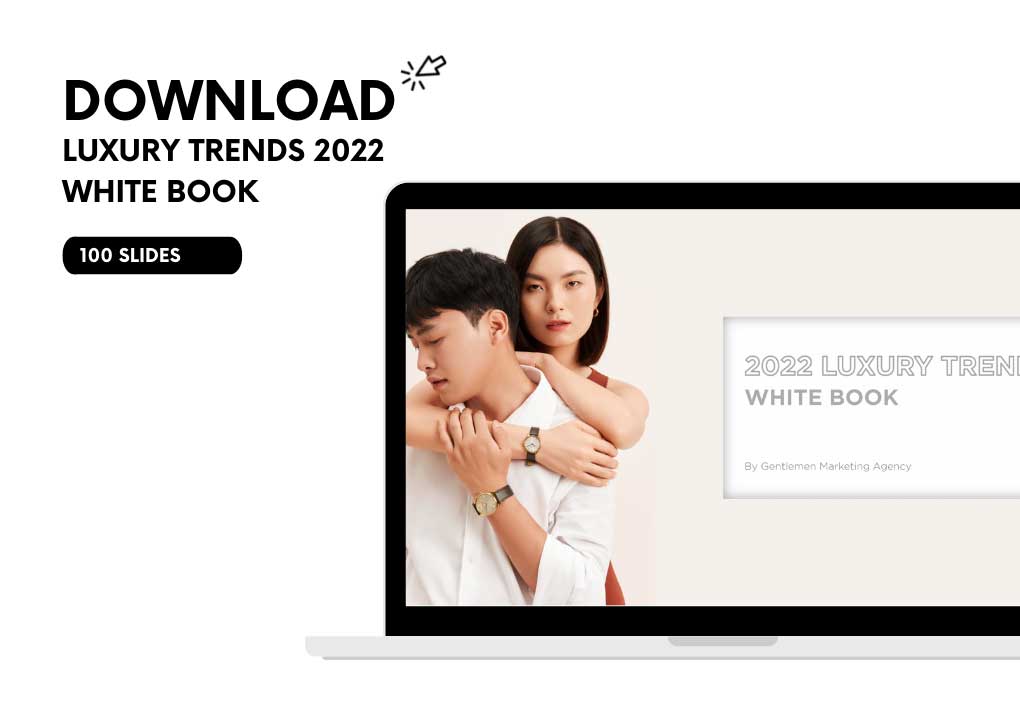
#1 CAMPING – When Outdoor Aesthetics Meets Fashion
In the early summer of 2022, there is a boom in outdoor camping in China, a micro-vacation that allows young people to get away from the hustle and bustle of the city, get close to nature, and release stress. Behind this industry, there is also a boom of “camping dressing” including conversations and hashtags on Little Red Book about “what to wear for camping?”.

Both Gen Z and Millennials are bringing camping equipment, setting up tents in the field, wearing camping-style clothes, and under a beautiful photo is a new era of youthful and energetic sportswomen and sportsmen. This audience has a sporting, energetic, and sunny atmosphere. They are often the Chinese young generation concerned about their health but also about enjoying their time off. For fashion brands, it means a new niche to target with new design ideas and campaign ideas to seduce a new audience.
#2 GUOCHAO – Traditional Chinese Outfits with a Twist
Ancient design is taking a new place among new fashion items designed in China. The luxury brand Dior noticed the brand but unfortunately missed the shot creating a backlash. When the execution is well done and the recognition to ancient Chinese dynasties is assured, it can be a successful strategy. The Ming dynasty noblewomen mostly wear red large-sleeved robes or used to wear peach red, purple, green, and some light colors. The usual daily wear was as the following one:
- A short shirt and long skirt
- A waist tied with a silk belt
- A wide skirt with a phoenix tail style or a moonflower style
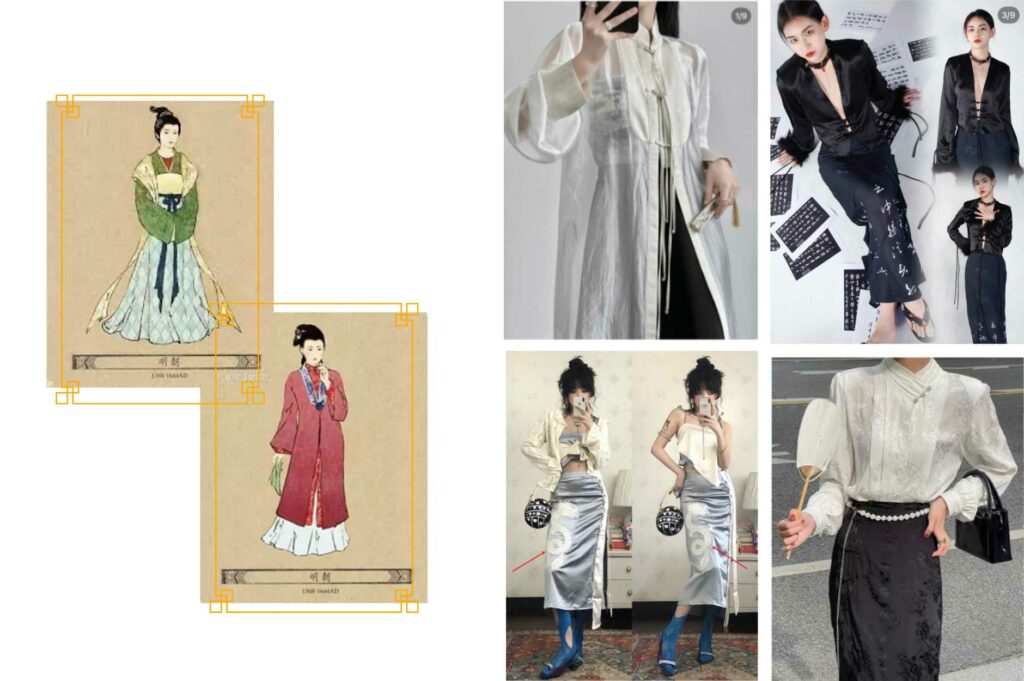
New Chinese dressing retains the traditional classic Chinese elements, including the Chinese button-up, diagonal placket, and stand-up collar, and uses the Western style of cutting and structure, making the style strong but not overt. Compared with the typical “Chinese style” such as traditional Chinese dress and ancient Qipao (the cheongsam is a female dress with distinctive Chinese features and enjoys a growing popularity in the international world of high fashion), it weakens the sense of ceremony and grandness of traditional Chinese dress and is more popular and fashionable.
Some brands and especially Chinese fashion brands are jumping on the trend to propose wedding dresses with Qipao design. This design is a success among young Chinese women. To avoid cultural appropriation, the best strategy is to avoid the re-interpretation of this design but instead partner with Chinese brands. Having a co-branded collection would be a better tactic to seduce Chinese consumers and avoid any bad buzz.
#3 ADAPTIVE – New Clothing Lines for People with Disabilities
Adaptive clothing is primarily clothing made with the disabled in mind and can be worn by able-bodied individuals. These people may be because of age, wheelchair use, motor skill level, cerebral palsy or multiple sclerosis, brain injury, and other conditions. China is among the leading markets to take this matter into account by proposing special initiatives on e-commerce platforms.
In mainland China, over 85 million people have a disability. The disabilities with limb and vision account for 44% of the total disabilities encountered. All industries, including the fashion industry, are adapting with easy-to-put apparel with one hand or without, additional functions for users’ daily activities, and adaptive medical devices. Recently, Tmall launched the ‘One Shoe Project’ to unlock the possibility for handicapped people to purchase one shoe instead of a pair.
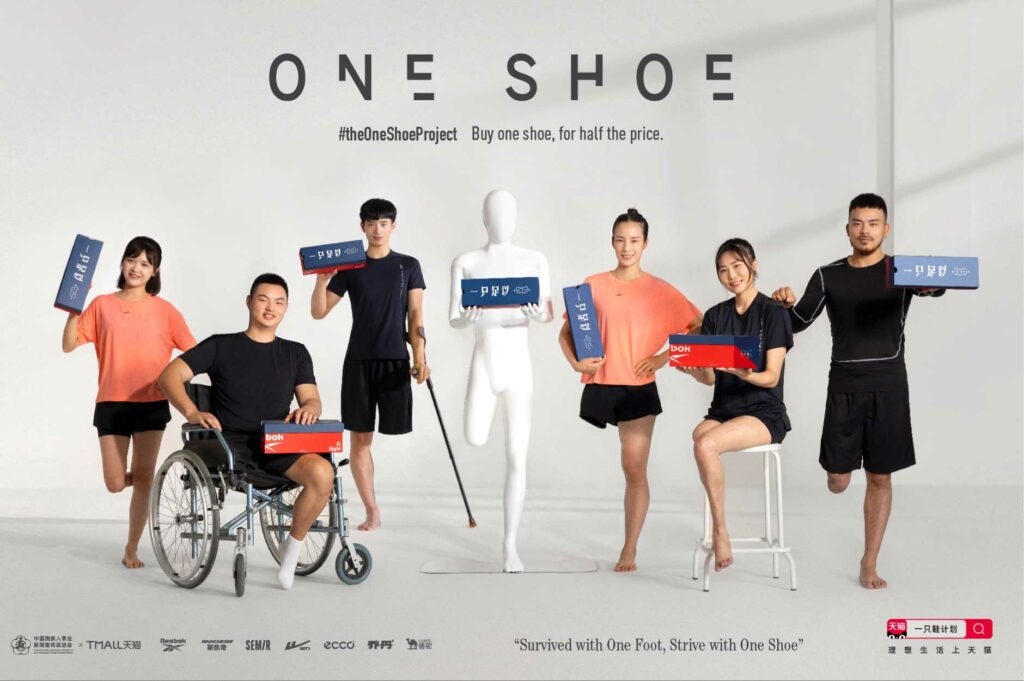
So now more and more clothing brands are making exclusive clothes for this consumer group. This type of adaptive clothing is designed using elements that make dressing easier, with stretchy and soft materials, featuring easier opening and closing devices. For example, Friendly Shoes launched by an occupational therapist, and based on clinician and family values, is a functional and fashionable shoe that addresses elements that most shoes do not consider. The brand’s adaptive footwear offerings include Parkinson’s-friendly shoes, kid-friendly slip-resistant shoes, and mid-top shoes that are easy to put on.
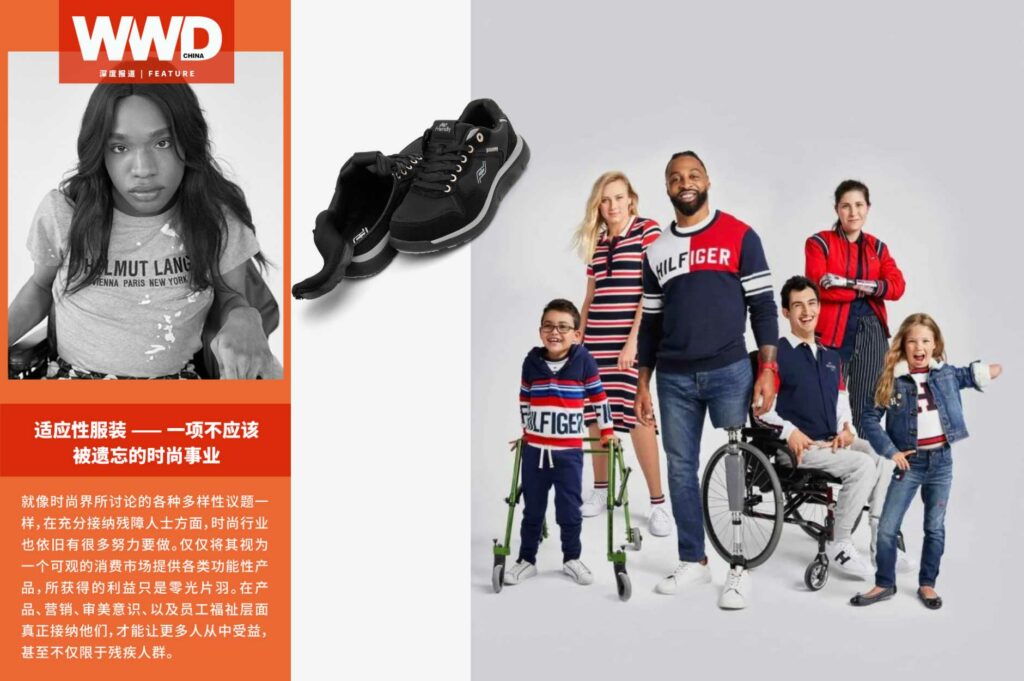
#4 SUSTAINABLE – Highlight of Pollution-Free and Cruelty-Free Materials
In recent years, sustainability has become increasingly important for fashion consumers and “sustainable fabrics” are being used in various ways in the fashion industry. But compared to Europe, sustainable fashion is very different for the final consumers in China. While European fashion consumers would purchase a brand for its sustainable purpose solely, Chinese fashion consumers will always favor design, price, and quality. 77% of Chinese consumers are willing to pay 5% to 20% extra for sustainable fashion items. Sustainability is a plus, but not a motivation to purchase.
The major example of a successful sustainable fashion brand in China is ICICLE. This brand, originated from Shanghai, managed to propose high-quality materials that are durable, put less pressure on the environment during the manufacturing process, and are less polluting in every way.

#5 VIRTUAL – The Exclusive Launch of Virtual Collections
In 2022, the clothing industry met the metaverse. Some brands use computer technology to simulate fabric and other brands release their collection only in the digital world with no existence in the offline world. For the production, the pictures or videos are synthesized after considering the clothing pattern, fabric material, shape, and human movement, as well as the form and changes in dressing. Moreover, more and more brands are opening the exploration between virtual clothing and consumer interaction. For the digital display of collections, AR on WeChat and game crossover with video games such as Honor of Kings is one of the main strategies used by fashion brands in China.
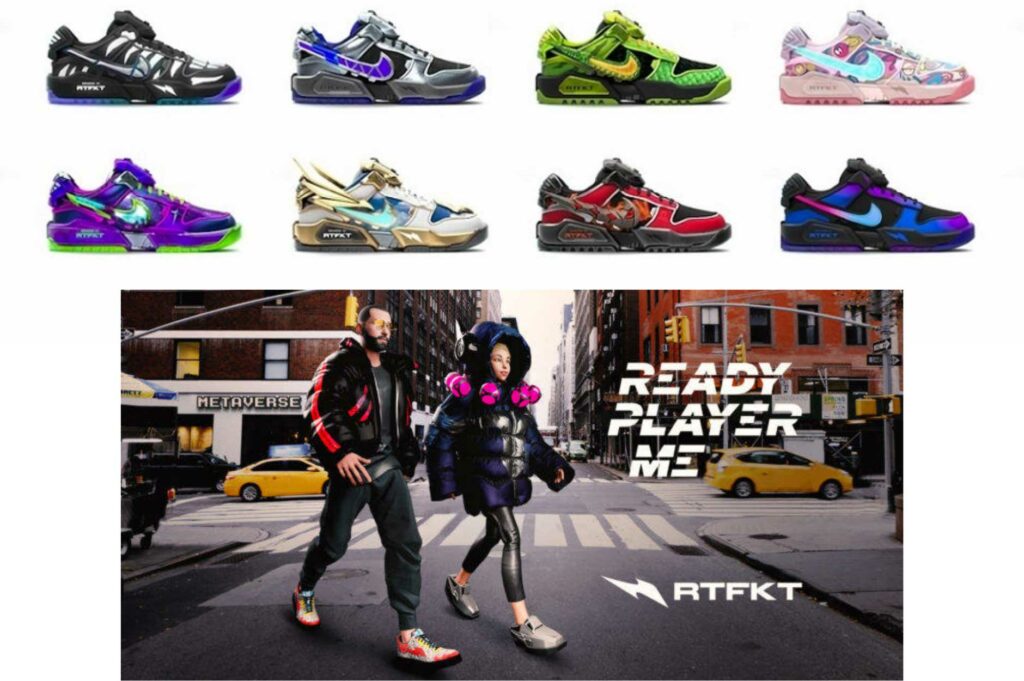
The famous virtual fashion brand in China, RTFKT, launched the first virtual jacket, namely META-JACKET. This is an upper puffer fish jacket, with mechanical animation of the ears and cuffs, dynamic screen, and power suspension necklace. The first jacket designed by RTFKT sold for $ 125,000. After that, Nike also worked with RTFKT to launch the first virtual sneaker that the brand described as “The Future of Sneakers”, marking the official development of Nike to virtual fashion.
#6 PET – Dedicated Clothing Lines for Cats and Dogs
Latest data shows that the number of dogs and cats in China’s cities and towns exceeds 100 MILLION in 2020. The overall consumption scale of the urban pet consumption market reached 202.4 billion RMB, an increase of 18.5 % over 2018, and the year-on-year growth rate of the number of pet brands on Tmall was more than 60%, which shows that the pet economy is in a continuous growth industry.
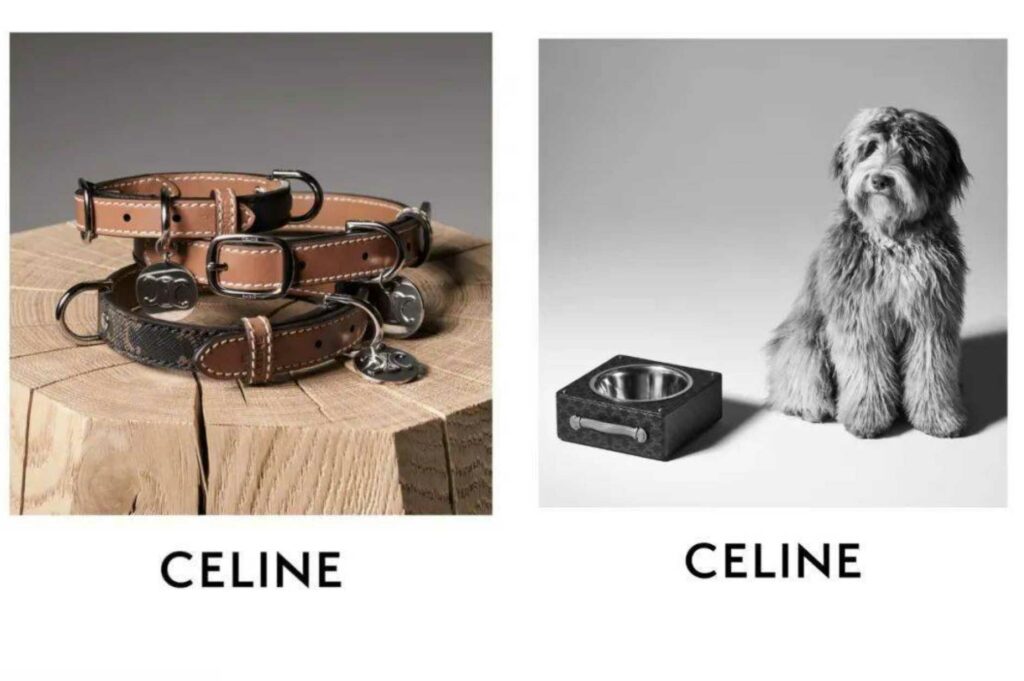
Making clothes specifically for pets has become a very promising business. Pet clothing has a high unit price, strong design features, and in line with the younger generation’s pursuit of value. Chinese young people generally like to dress up their pets, and then made photos or videos to post on social media such as Xiaohongshu and Douyin.
In May 2022, CELINE, a French luxury brand owned by LVMH, announced the launch of its first luxury pet lifestyle collection. The assortment includes leather collars, leashes, travel bags, toys, snack packs, and a variety of other pet dog gear. In addition to dog accessories, CELINE has added pet cats to the design of the new version of the “Voyage” tote bag.
With the rapid development of the pet market, more and more luxury goods are also getting involved in the industry of designing obligations specifically for pets. If you want to be creative in China, launching a collection dedicated to pets along with fashion outfits for their owners is a win-win strategy.
#7 ATHLEISURE – When Fitness and Yoga are the New Everyday Fashion
In 2020, more than 60% of Chinese women who are sports and fitness enthusiasts have participated in yoga practice. In 2022, this number increased even more with the development of online and offline yoga classes. With the rise of yoga and the women’s fitness market, the consumption of yoga clothing has heated up.

In the past 13 months, at least 4 domestic emerging sports brands have received financing, with several financing amounting to hundreds of millions of dollars. And the famous yoga apparel brand Lululemon achieved revenue of 1.5 billion U.S. dollars, up 30% year-on-year, net profit of 188 million U.S. dollars, up 30.73%. Lululemon is a key benchmark for fashion and athleisure brands in China.
Behind the data, there is no hiding the new fashion trend “Athleisure”, which is a combination of Athletic and Leisure, a combination of streetwear and sportswear. This style promotes a healthy lifestyle and proves that style and comfort are not mutually exclusive. In China, women often wear white sneakers instead of heels or boots. This is a major difference from the West, changing both the face of the footwear market and the womenswear market. Chinese women want to be classy and comfortable.
Gradually you can see girls abandoning jeans and wearing comfortable and breathable yoga pants becoming the first choice. If you are a fashion brand, you need to keep with this main cultural difference. If you propose too strict outfits, your brand may not be the right fit for the Chinese market
#8 SKATEBOARD – Jumping into the Cultural and Sporty Lifestyle
Skateboarding, as a modern outdoor sport for young people to spend their time, has gradually changed from a fringe culture to a mainstream culture. This sports has even been recognized by the Olympic Games.
The trend of skateboarding as a theme is also gradually popular. According to Tmall data, in the “618-shopping” season, skateboard-based sales of related products increased by 290%, signaling the progress of people in love with skateboarding to the pursuit of skateboard fashion wear. All the sportswear and streetwear brands incorporating skateboard elements are among the hottest ones these days in mainland China.
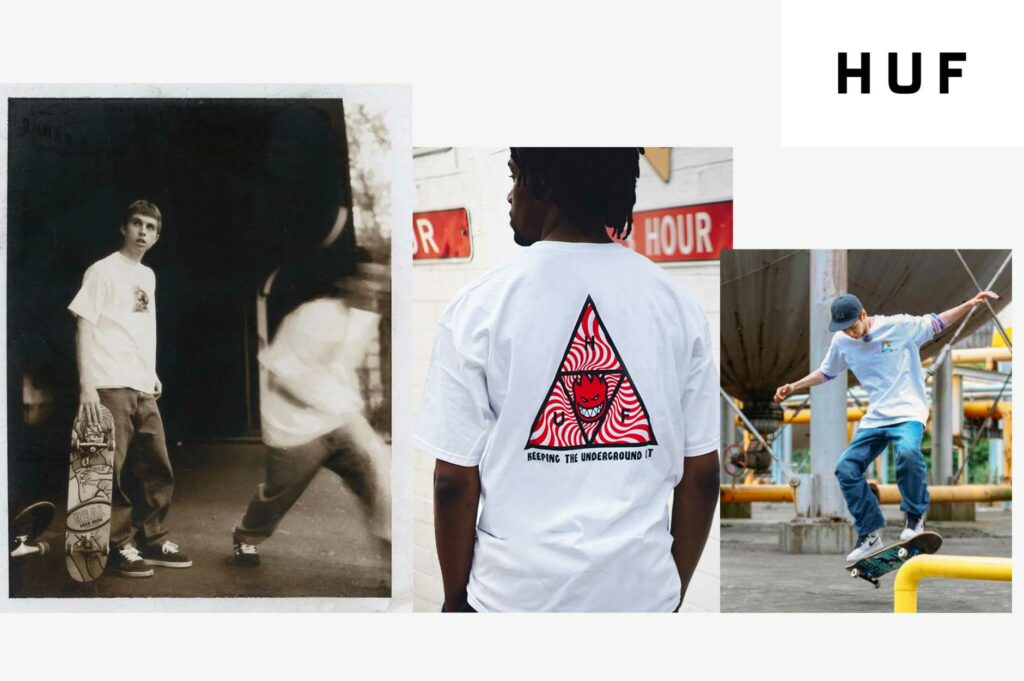
The American brand HUF is a trendy brand created by professional skateboarder Keith Hufnagel in 2002, which has become a new benchmark for skateboard brands by heavily incorporating the street culture of skateboarding. In 2021, local Chinese brand Li Ning launched a skateboarding collection led by veteran skateboarder Erik Ellington, which represents the beginning of the Chinese sportswear industry’s attention to the huge potential behind skateboarding. Tmall Global also launched the “Summer Skateboarding Program”, and numerous overseas skateboarding teams began to cooperate with street fashion brands.
#9 ANTI-UV – When Fashion Protects from the Sun
Unlike Western countries, most Asians prefer fair skin compared to tanning. This beauty standard is still vivid in mainland China and some celebrities who adopted Western trends and highlighted their tan on social media received a backlash. For instance, the Chinese model He Sun received several comments criticizing her tan on Weibo. Hence, summer clothes that are UV-proof and sun-protective enough for the skin still have a strong impact in terms of sales.
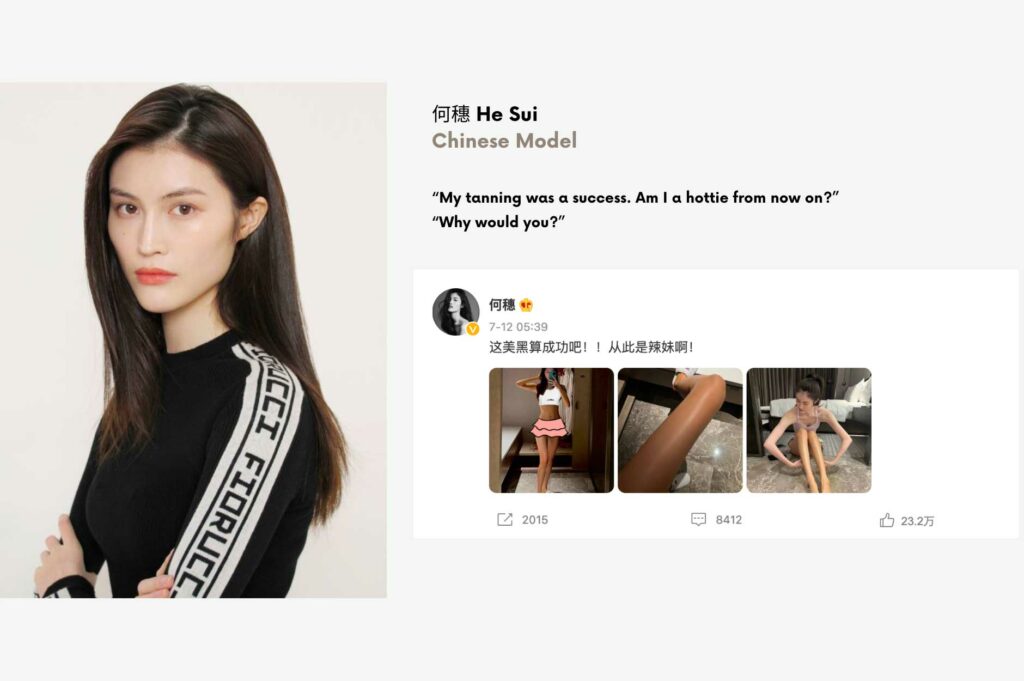
The Chinese brand Beneunder is a professional sunscreen brand that focuses on allowing you to feel the sun and explore outdoor life while protecting your clear white skin. Chinese consumers can purchase hats, masks, swimsuits, t-shirts and even pants. The brand insists on developing UPF 50+ fabrics and products that can effectively block more than 95% of UVA/UVB rays, to better help people get healthy protection in the outdoors. In addition to the sun protection, Beneunder anti-UV positioning also has a beautiful design that has attracted many Chinese girls. Once again, design is the key and the anti-UV trend is a plus. The single product sunscreen mask has been growing explosively under the new epidemic, with sales of up to 3,000 units per month on Tmall.
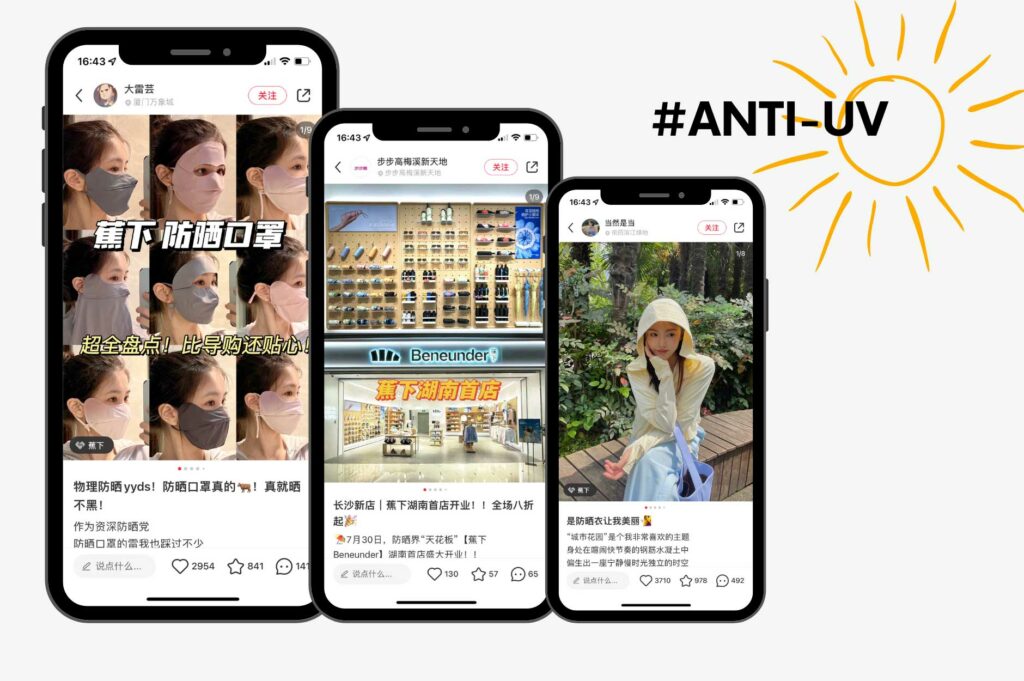
It must be said that people are becoming more and more demanding, and while enjoying the sun, they also have new requirements for “sun protection – beauty”. Having such a USP on your items can help target more specifically the Chinese consumers living in mainland China and abroad.
#10 SHAPEWEAR – Comfortable and Flattering Lingerie on the Rise
Shapewear is the latest category among lingerie and underwear. For a long time, consumers misunderstood shapewear as a way to show more skin and be more sexy. With modern women paying more and more attention to body shape and comfortable underwear, the items with good material design and better fit shapewear receive the best success.
In China, the shapewear market is slightly different from the West. The American brand Skims launched by Kim Kardashian, received a backlash before repositioning the brand. At launch, the brand focused on the same USP as in other markets with an assortment dedicated to all skin color tones and very simple design. But none of the USP were working:
- Colors: Chinese consumers did not care about the wide assortment available since they are only interested in the light colors, accounting for only 4 references of the full assortment
- Design: Chinese women wear lingerie to feel sexy and they blame the design for being too simplistic and not appealing enough, more recommended for older generations than younger generations
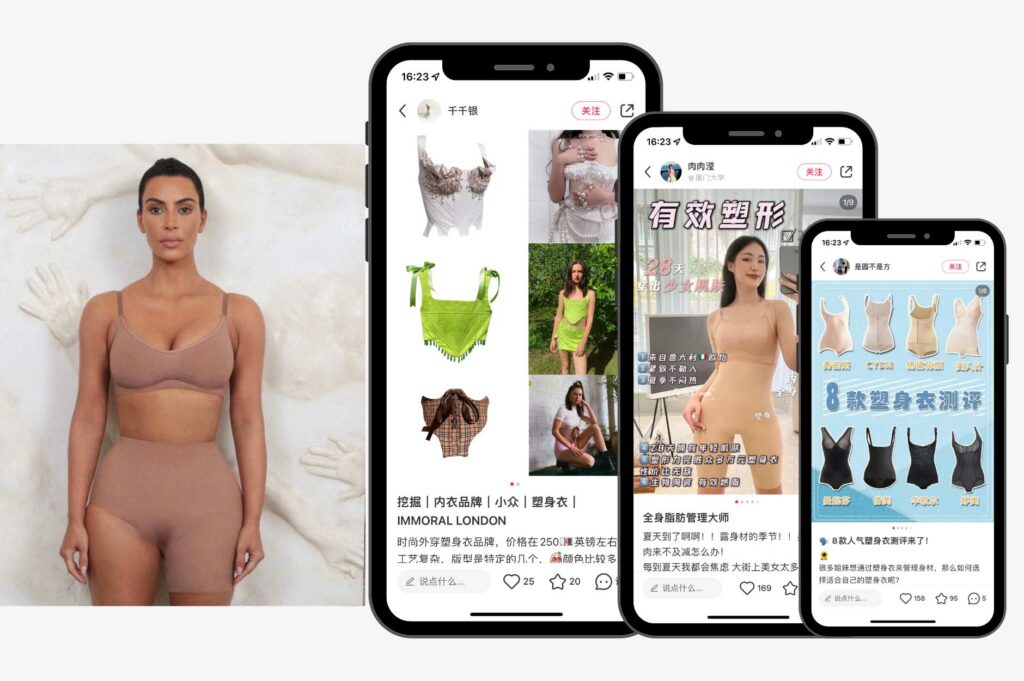
Shapewear is not a new product in the Chinese market. On online shopping platforms, the search keywords “shapewear” is able to recommend you up to 1,000 + stores. Shapewear belongs to one of the product lines in the lingerie market, which also continues to support women’s “freedom to dress” and “freedom of lingerie”, and more and more shapewear brands are turning to comfort, self-love, and health positioning. If you are an underwear brand entering the Chinese market, you will need to pay attention to the key motivations of women for purchasing lingerie and the smartest way to incorporate shapewear into your brand positioning.
Working on Your Next Move in China? Contact us
Nowadays, fashion trends are changing at an alarming rate with the development of the times and the diversification of aesthetics. Especially in China, brand manufacturing, identity, and quality improvement are all things that need to be taken into consideration. If you too want to develop your apparel brand in China and reach your target audience, GMA can help you.
In China, Gentlemen Marketing Agency (GMA) is a company specializing in digital marketing. With 10 years of experience in the Chinese market and an office in Shanghai, we understand how to effectively promote your company in China based on the market and Chinese consumers. Our Luxury Divison is dedicated to fashion and luxury brands with 75+ marketing experts who understand the latest technological advances and market trends.

Contact us to meet the Head of the Luxury Division and talk about your next project in China

